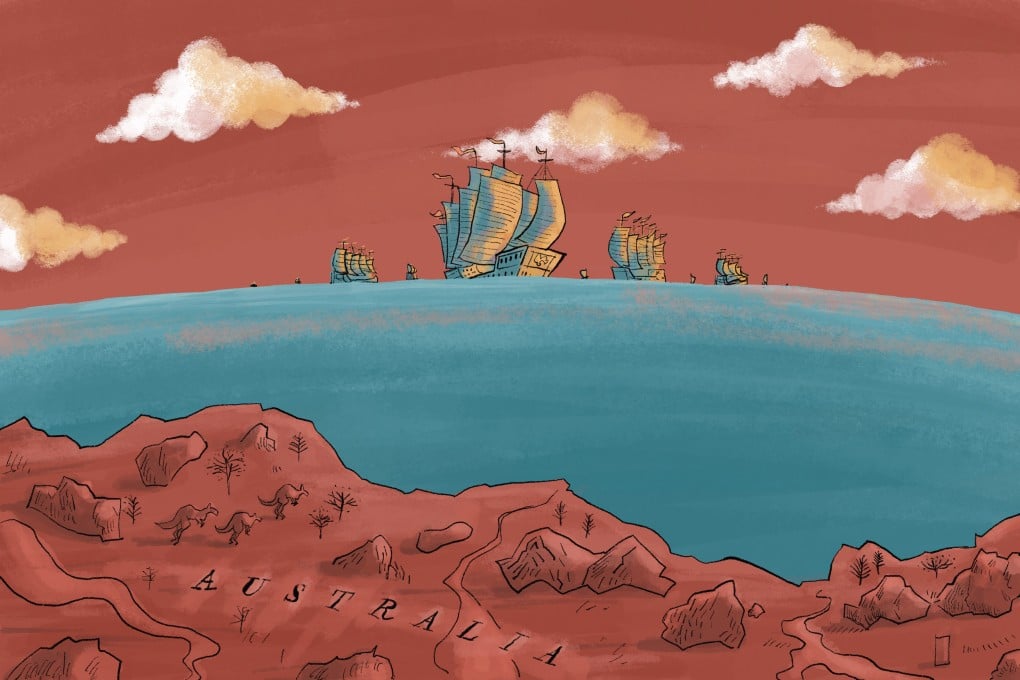Advertisement
Did Chinese explorers land on Australia’s shores almost 200 years before Europeans?
- Research of 1602 map, the Kunyu Wanguo Quantu, has raised questions about the history of Chinese exploration
- A book on the subject claims that the Ming dynasty Treasure Fleet may have journeyed to both Australia and New Zealand
Reading Time:5 minutes
Why you can trust SCMP
99+

This is the second in a two-part series on the voyages of the Chinese in the pre-Columbian era. Here, Victoria Bela examines the possibility that explorers from the East travelled to Australia and other parts of the world.
While Chinese marine voyages in the early 15th century are known to have been massive undertakings, most scholars believe these journeys only took the explorers to countries bordering the Indian Ocean.
But what if that was not the boundary of their charted exploration and they reached as far as the Americas, Africa, and even Australia and New Zealand before European explorers did?
That is what author Sheng-Wei Wang has investigated in her book, Chinese Global Exploration in the Pre-Columbian Era: Evidence from an Ancient World Map, published last year.
Wang’s conclusions are based on her analysis of the first Chinese-language world map, the Kunyu Wanguo Quantu (KWQ), which was published in 1602 by Italian priest Matteo Ricci while he lived in China.
After comparing the KWQ with four major European maps of the 16th century, Wang concluded that the KWQ was not a map of European origin, but rather sourced from Chinese maps drawn by Ming dynasty (1368-1644) explorers – the massive “Treasure Fleet” led by admiral Zheng He.
“Although the extent of his expeditions is still under debate, most scholars agree that his mariners reached Africa during their fifth to seventh voyages,” Wang wrote.
Advertisement